Ottoman Istanbul
After Mehmet II had entered Constantinople on May 29th 1453 he needed a mosque to celebrate his victory. To turn Hagia Sofia into a mosque they needed a minaret. It was built and finished by June 1st and the new mosque was ready to function.
Yedikule Hisari, the fortress built at the south end of the Theodoian wall to protect the city from further attempts to conquest
However, he also ordered to built a mosque dedicated to himself, the Fatih camii, which replaced a demolished church. The mosque complex was surrounded by medressas (theological schools), a karavanserai, hospital, bath house, market and a cemetery with mausoleum for himself. He also instigated his viziers to built mosques surrounded by similar infrastructure. These became the nuclii for the future neighborhoods of old Istanbul.
Fatih Camii, the biggest mosque in Istanbul
\
The importance of a mosque in Istanbul can be judged from the number of minarets. An ordinary mosque has only one. The mosque commissioned by a pasha or higher official can have 2. Only a mosque commissioned by a sultan can have 4 minarets. There is only one exception, the blue mosque: it has six.
Ottoman street close to Süleymaniye mosque
Every Ottoman sultan seemed to be obliged to compete with his predecessors in the building of a new, grander mosque with the accompanying medresses, cemeteries, mausolea, hamams, hospitals and karavanserais. The greatest sultan of all times next to Mehmet II probably was Süleyman I. He ruled from 1520 to 1566. He had several bynames, the Great, the Magnificient or the Lawgiver because he was the first to assemble and introduce a consistent book of laws which became the rule in his vast empire. However, in the west he was mainly known because he was behind the biggest danger the Ottoman empire ever formed for the people of the Balkans, Austria and the German empire. From September 27th to Oktober 14th 1529 Süleyman and his general Ibrahim Pascha laid siege on Vienna. Although the town withstood the Ottoman assault the attack had the consequence that most of Hungary eventually ended up under Süleyman’s rule. Buda(pest) was expanded into a fortress to prevent a reconquest by the Habsburgs.
Courtyard of the Blue mosque
But of course Süleyman had to do something about the embarrassment that he and his troops were defeated at Vienna. The result was the construction of the Süleymaniye Camii, the most magnificent and after the Fatih Camii the biggest mosque in Istanbul.
Süleyman’s chief architect was Mimar Sinan. During his long life (1488-1588) he constructed more than 374 buildings for the Sultans Süleyman I, Selim II and Murad III, of which were 92 mosques, 52 small mosques, 55 medresse schools, 7 Koran schools, 20 mausoleums, 17 public kitchens, 3 hospitals, 6 aqueducts, 10 bridges, 20 caravanserais, 36 palaces and mansions, 8 vaults and 48 baths. Sinan’s architectural base line was Hagia Sofia. Sinan completed the Süleymaniye Mosque complex when he was 70. The dome has a height of 53 m and a diameter of 26 m. 2 of the 4 minarets have a height of 76 m. Sinan used 2 sets of minarets of different heights which gave the whole structure more lightness.
Entrance to the mosque is through an enormous courtyard surrounded by an arcade of columns. Since the terrain the mosque was built on descends sharply towards the Golden Horn the northern part of the courtyard and surrounding garden is supported by a substructure of vaults. The mosque is surrounded by auxiliary buildings, but also by a cemetery which also contains the mausoleum of Süleyman and his wife Roxelana.
The huge mosque survived several catastrophes. In 1660 it was damaged by a great fire. In 1766 part of the dome collapsed during an earthquake. When the courtyard was used as a weapons depot during world war I some of the ammunition ignited and burnt another part of the mosque. Since then it has been restored several times.
Mausulea of Süleyman and his wife Roxelana
The mausoleum for Suleiman himself was built after his death on the orders of his son and successor, Selim II, between 1566 and 1568. Next to it is the mausoleum of his wife Roxelana. Roxelana was of Russian origin. Süleyman had had a son with another wife, but then had 6 children amongst which were 5 sons with her. He was so enchanted by his wife that, for the first time, an Ottoman Sultan actually married his wife. But of course Roxelana’s main goal was to get rid of Süleyman’s first son, Mustafa, from a different mother. She eventually succeeded and Süleyman ordered to strangle Mustafa. Roxelana had made him believe that Mustafa had planned a rebellion.
Sultan Süleyman said of his architect Sinan that he is the only one who never disappointed him. In Istanbul alone, 85 buildings of Sinan survive. At the base of his most famous one, the Süleymaniye Camii, at the corner between two steets, is his very modest mausoleum. And he still helps the people of Istanbul because there is a faucet where tired porters can tap a refreshment after they had to climb up the hill.
Sinan's mausoleum
Due to its prominent position on the artificial platform, seen from the Galata bridge the Süleymaniye Camii dominates the skyline of Istanbul. When you come from the sea of Marmara it is the Sultan Ahmet I Camii, the Blue mosque.
It was built during the reign of Sultan Ahmet I from 1603-1617. Since the complex forms one side of the former hippodrome, which is the main meeting point of all tourists visiting Istanbul and all touts trying to profit from them, it is the most visited mosque of all.
Only the Hagia Sofia, which after 1935 was regarded as a museum and only recently had its function as a mosque returned, requires an entrance fee, which is 30 €. Visiting any other mosque in Turkey is free. And they are always open. On hot days like during my stay it always is incredibly relieving to go into a mosque, sit down, watch the crowd if there is one and enjoy the quietness.
For such a purpose the blue mosque is the least suitable. When I first walked past the queue was as long as the entire outer courtyard. This might happen after a cruiseship has arrived and they have sent all their 3000 to 5000 dummies to the Blue Mosque. However, all the other times when I walked past, in late afternoon for example, there was no queue.
Now in my view nothing is blue in the blue mosque. However, it is a striking building with its courtyard surrounded by a gallery supported on 26 columns carrying 30 little cupolas. The dome with a diameter of 23 m might not be blue, but it is covered with 28000 tiles from Izmit and due to the 250 windows it is very well lit.
There are about 4000 mosques in Istanbul. Every mosque has an iman who does the service and prayer, and a muezzin, who announces the prayers from the minaret. In the restaurant, the music stops when the call of the muezzin for prayer starts. Some of the mosques fill well during prayer. At other times they are open and welcome visitors. Only in those few big mosques and the Hagia Sofia which are visited by masses of tourists they make a difference between believers entering the main hall and tourists. Those have a separate entrance for tourists and a segregated space from where they can watch. Some have stretched out on the carpet, seemingly with the intention to appreciate the adorned cupola, but in reality taking a nap. So a guy comes from time to time to wake them up and chase them out.
The Blue Mosque is the only one with 6 minarets. Now that could have been the idea of a particularly megalomaniac sultan who wanted to be bigger, greater and more important than the others. This attitude of course is well known under politicians. However, there also is the legend of a misunderstanding: in turkish, the word for gold is almost the same as six altun/e. Sultan Ahmet wanted to have gold plated minarets. Instead he got six. If the story is true then I doubt that the architect survived that mistake.
However, my favorite among Istanbul’s mosques is Beyazid. It was commissioned by Sultan Beyazid II and built between 1500 and 1505. It therefore is the second oldest of the mosques commissioned by a Sultan and was built before Sinan introduced his poignant style.
Like the later mosques it has a courtyard surrounded by a colonnade with 20 columns which are made from materials of different colors. porphyry, verd antique, and pink granite. The roof consists of a magnitude of little domes. In the middle of the courtyard is a beautiful fountain where the believers can do their ablutions. Strangely enough only men are doing that.
You can enter the mosque from Beyazid square through a highly ornamented gate. Across the square is the entrance to the university. When I am there some celebration is going on, and teachers, family and students in their best outfit and flowers or books in their hands come across the square to the mosque for prayer. They are expected by a group of little boys who try to sell bottled water. Unlike the gloomy silence surrounding christian churches the courtyards of mosques are places full of life and joy.
Another addition the Sultans built for the town were the bath houses and water fountains. There are a couple of spectacular examples of the latter, copiously decorated. One is at the entrance to the Topkapi palace. The fountain of Sultan Ahmed III was built in 1728 in Turkish rococo. It is decorated with calligraphy citing the Koran. Unfortunately nobody can read it since the calligraphy is written in Arabic. Today the ordinary Turkish people can neither understand Arabic nor read the Arabic script since Turkish is now written and taught in western alphabet.
The Conquest of Istanbul by Mehmet II did not disrupt the ties with christian powers. On the contrary, it looked like the Italian City states were only waiting to have their privileges renewed with the new rulers. Venice and Genoa already had their merchant premises in Galata on the other side of the Golden Horn. Shortly after the city itself surrendered to the Ottomans these parts also were conquered. However, the landmark, the Galata tower built by the Genuese in 1348 as a watch tower, survived. Trade privileges with the Genuese and the Venetians were quickly renewed although in the coming centuries both cities were in a constant war with the Ottoman empire.
Mehmet II, who ruled for 30 years, also ordered the construction of the grand bazaar, an enormous market not far from the hippodrome. It still exists today as a covered city in the city. It is filled with numerous little shop which today mainly cater for the tourist. When I pass a carpet shop, a friendly looking guy asks me whether I want to buy a carpet. I walk up to him and say: “Look, it is strange. This is such a big bazaar but so far I have not discovered a single thing which I need.”
Inside Grand Bazar
Inside Spice Bazar
Next to the grand Bazaar is the Egyptian bazaar, which also is called the spice bazaar. There are shops selling spices there, but also here most of it is dedicated to stuff tourists like. I don’t know how much they actually sell. There are lots of tourists in Istanbul, of course, but I don’t have the impression that they buy a lot of souvenirs in the bazaar.
After Mehmet II had conquered Constantinople he first used another palace. However, in 1478 the construction of a new palace was begun. Its entrance is next to Hagia Sofia and the fountain of Ahmet III. It is one of the parts of the palace which originally was built by Mehmet. Many sultans added a new part to the building or rebuilt a part to make it more beautiful or practical. The palace, now called the Topkapi palace, in its vastness, the scope of the collection on display, the number of buildings and its historic importance can only be compared with a few places in the world, like the forbidden city in Beijing or the Vatican in Rome. They know that and therefore they ask a hefty 50 € entrance fee.
The palace has four courtyards which are surrounded by a common wall. The first courtyard can be accessed after a check of your bag. This will cost you your Swiss pocket knife which in the entire world is generally regarded as one of the most efficient weapons of terrorism. After you have passed that first obstacle you are in the former realm of the Janitsars. They were the elite army of the sultans and as such a danger for those inside the palace as much as for any outside enemy.
After you have got your ticket you can progress to the Orta Kapi, the gate of salutation. It gives access to the enormous second courtyard, 130 m long and 110 m wide. The layout is still much the same as in the times of Mehmet II but there were frequent reconstructions of the buildings.
To the right was the vast building housing the kitchens. Those were providing the daily food for around 5000 people living in the palace and on special occasions up to 15000. These were for example the paydays of the Janitsars every third month. Then they also got food as a special treat. When they were dissatisfied they used to topple over the pots and then the Sultan or his Vizier had a problem.
The kitchens were also rebuilt by Sinan in the 16th century after they had been destroyed by a fire. The buildings house an extensive collection of cooking gear and the world’s biggest collection of porcelain and a cafe which is surprisingly small and bad for the number of visitors.
In the opposite corner is the Divan, the imperial council. Here the Grand vizier and his council members held meetings four times a week to determine the proceedings of the vast empire. The meetings were held in a first room while secretaries took notes in the open room next to it. Behind was an archive for the notes.
Imperial Divan
Originally the sultan was able to follow the council meetings without being noticed from a window with a golden grill. This window was later closed.
Imperial Divan
Between Divan and the kitchens is the gate of felicity, the access to the third courtyard. Nobody was allowed to enter here without special permission of the sultan, not even the Grand Vizier. The gate was redecorated in Rococo style in 1774.
Audience chamber
Behind the gate is the audience chamber, a square kiosk surrounded by a colonnade of 22 columns. Here the sultan would receive important visitors like foreign missionaries or ambassadors. It was also here where they could hand over their presents.
Library built by Ahmet III
The other free standing building in this courtyard is the neoclassical library built by Ahmet III in 1719. Maybe the previous sultans did not read any books. And also Ahmet III seems to have been content with a rather small library building and the collection of books is even smaller.
The buildings around the third courtyard housed dormitories, the schools for the pages and the imperial treasury, where many of the presents the Sultan received, ended up. There is an enormous exhibition of the wardrobes of the different generations of Sultans, their concubines and wives and their children, in all ages. Apparently they were collectors who did not like to throw things away. Another section exposes calligraphy and paintings. The treasury has a lot of remarkable and utmost precious exhibits.
However, most striking and most visited is the collection of Islamic relics in the Privvy chamber. The presentation gives the impression that the owner wants to show those others in Mecca how important they are for the faith. There is a footprint of Muhammad, several of his sandals, his cloak, two swords, a bow, one tooth, a hair of his beard and his battle sabers,
A visit to the imperial Harem has to begin in the second courtyard next to the Divan and ends in the third courtyard next to the audience chamber. Originally there were more than 400 rooms of which only few can be visited.
The most important person in the Harem was the sultan's mother, the Valide sultan. She determined what was happening, concubines and wives of the sultan had to obey to her. The harem housed the rest of his family, children, and the servants.
Interior of the harem
The harem was guarded by Eunuchs, many recruited from Africa and especially Ethiopia. The Eunuchs also stood guard to stop intruders. Some of the Eunuchs had great influence either on the Sultan, Valide Sultan or both. Sometimes they became the victims of the intrigues at the palace and, innocent or not, paid with their lives.
Taking care of a complicated family was not an easy task. Sultan Murat III for example, ruled from 1574-1595 and had 103 children. In the beginning competing younger brothers of new Sultans were murdered. When Murat III died and his 30 year old son Mehmet III came to power on January 28th 1595 he immediately ordered the killing of his 19 younger brothers. 1603 Mehmet also ordered to kill his son Mahmut and mother because the head of the black eunuchs convinced him that they were planning a revolt. It is possible that Mahmut and his mother became another victim of a palace intrigue of another of Mehmets concubines who wanted her own son to become the first and only surviving heir to the throne.
Room where the Sultan met his concubines for pleasure
This radical practice changed after February 26th 1618. That day young Sultan Osman II imprisoned his nephew Mustapha in what was called the cafe, an apartment which from now on was reserved for competitors to the throne. They were not allowed to leave. Mustapha, the rightful heir, was unsuitable as a ruler since he was mentally deficient. However, this practice continued until the Ottoman dynasty was overthrown with the formation of the Turkish republic in 1923. The consequence was that many new Sultans had never seen real life when they rose to the throne since they had spent most of their years in confinement. A recipe for disaster.
The ruling Sultan had an own part of the harem for himself where he met his concubines or wives. Since tastes vary later Sultans kept adding their own little rooms to this part of the palace which each have their own particular style.
The forth courtyard ironically called the imperial sofa was restricted to the sultan alone and in my view is the most beautiful. Many of the buildings offer a beautiful view of Golden Horn or Bosporous, the buildings are lofty and open with a lot of air. The buildings were called kiosks. Part of the courtyard are beautiful gardens with ponds and fountains which were partially lost due to later construction in the lower part of the palace grounds.
The oldest building in the courtyard is the chamber of the Chief Physician and court drugstore (Hekimbaşı Odası ve ilk eczane) from the 15th century.
In 1640, Sultan Ibrahim I added a specific building to celebrate the circumcision of his sons, the circumcision room.
Circumcision room
The names of many of the kiosks added in the course of time are a reminder of successful military campaigns of the Sultan who built them. There is the Yerewan kiosk, the Baghdad kiosk which reminds of the Baghdad Campaign of Murad IV and was built after 1638, and the Iftar kiosk.
In 1704 Sultan Ahmed III added the Terrace kiosk, which was rebuilt in 1752 by Mahmud I in the Rococo style.
In the 19th century the importance of the Topkapi palace declined. Sultans preferred to reside in other, new palaces built in different parts of the town. The old palace started to degrade.
Grand Kiosk
The latest building added was the grand kiosk built in 1840 by Sultan Abdül Mecid I as an imperial reception and resting place. It has a splendid location with panoramic views of the Sea of Marmara and the Bosporus. The interior already gives an impression that his builder was open for western ideas and culture. Abdül Mecid’s brother and successor as sultan Abdul-Aziz was for example an amateur composer and one of his works was a waltz …. the music typical for one of his greatest enemies.
In the 18th and 19th century incapability of the rulers and lack of reforms had led to a decline of the Ottoman empire which resembled very much to what happened 500 years before to the Byzantine empire. Some Sultans tried military reforms which were jeopardized by the Janitsars as the leading military order. At the same time young revolutionaries, the young Turks under Mustafa Kemal gained ground. In 1923 the rule of the Ottoman dynasty ended with the foundation of the Turkish republic.
Sources:
John Freely, De geschiedenis van Istanbul, Dutch translation, 1996
Link to the previous post:




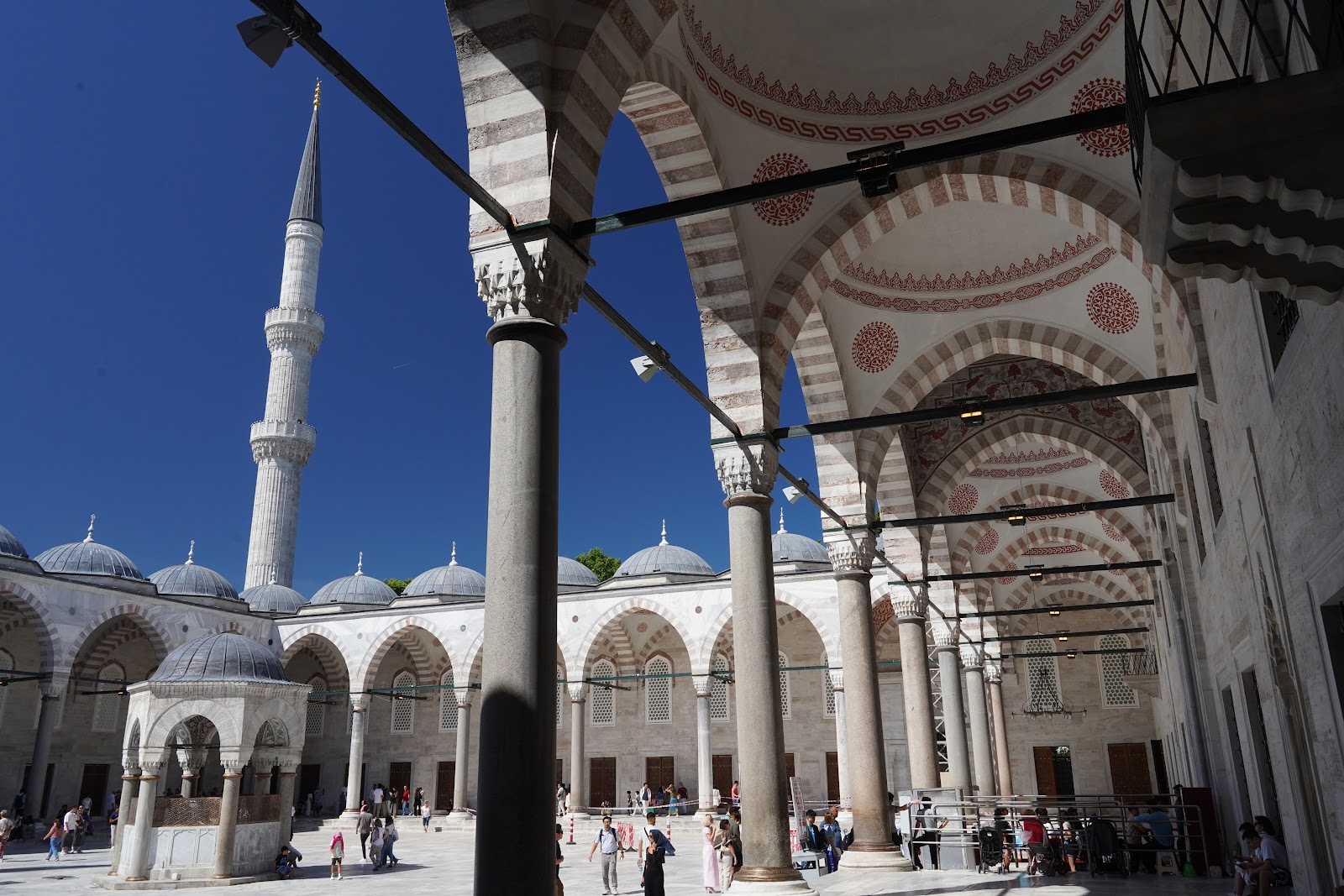












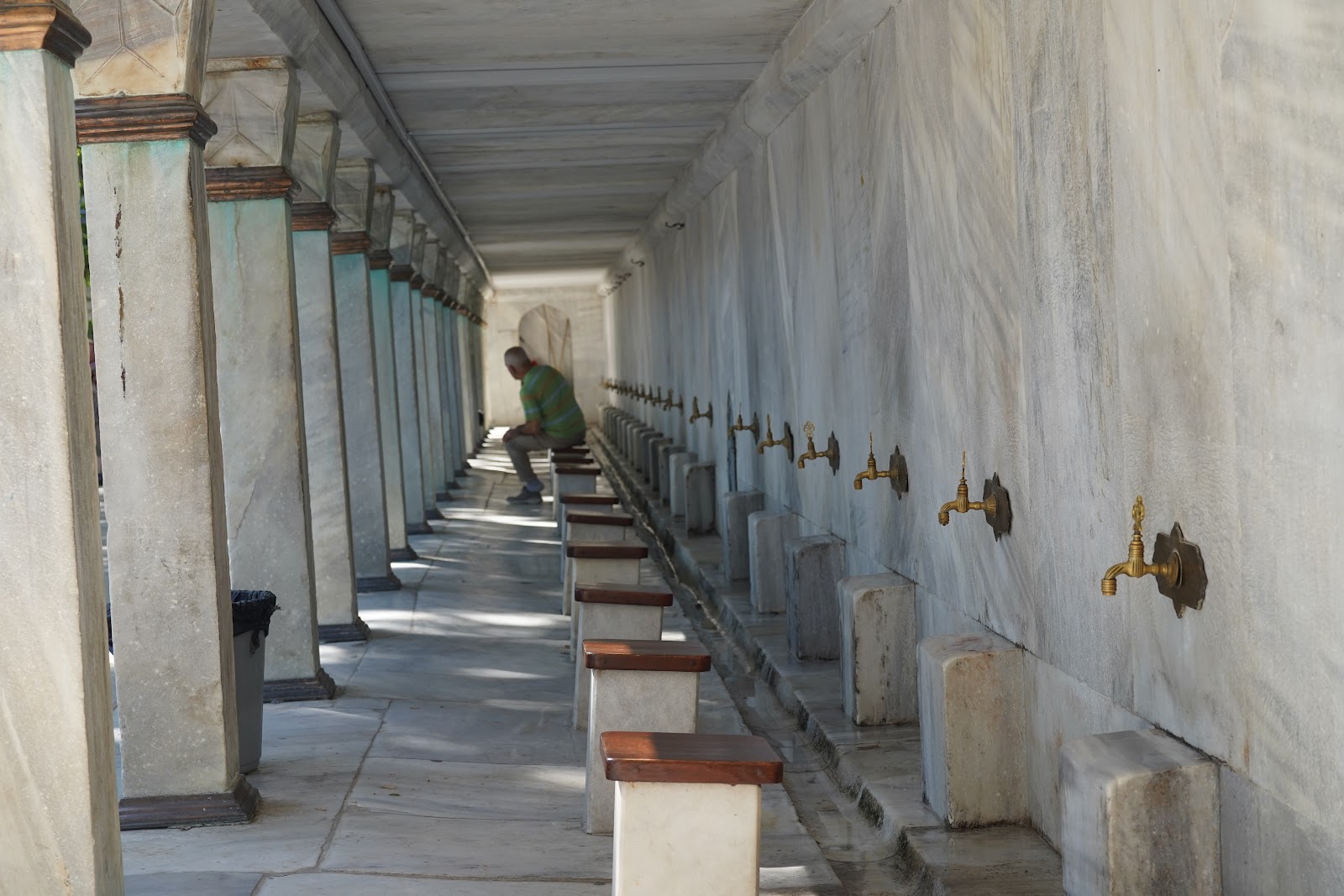



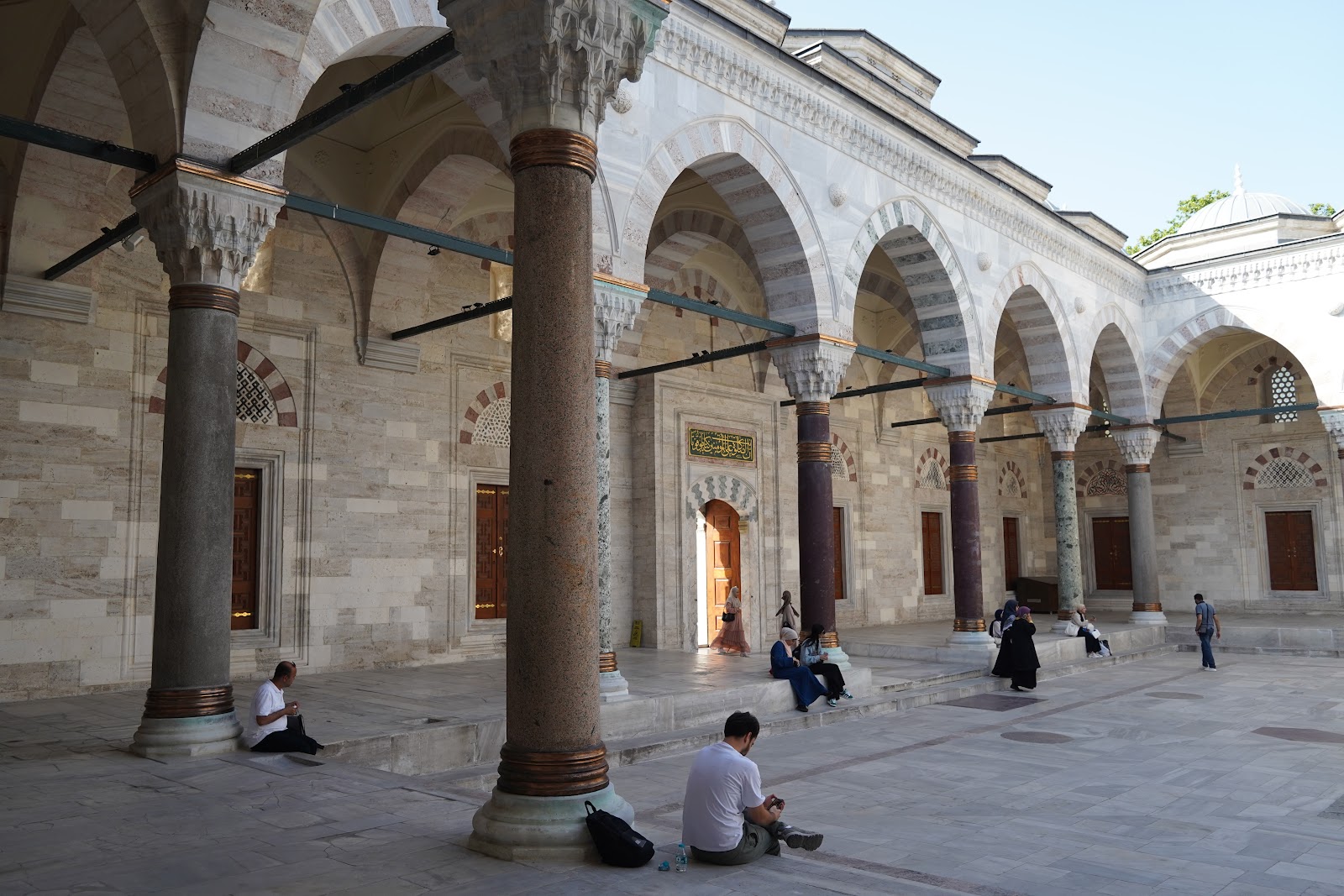





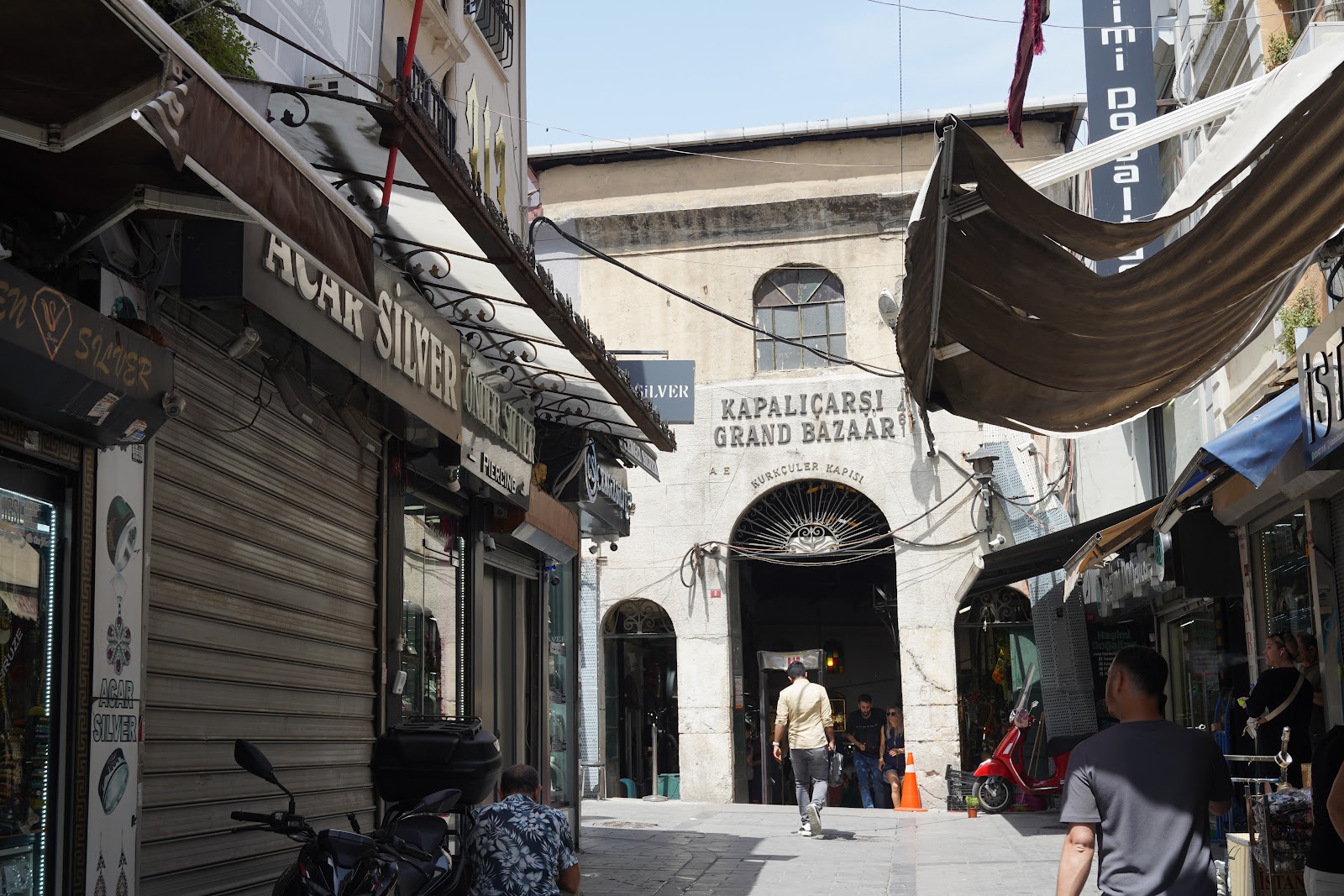



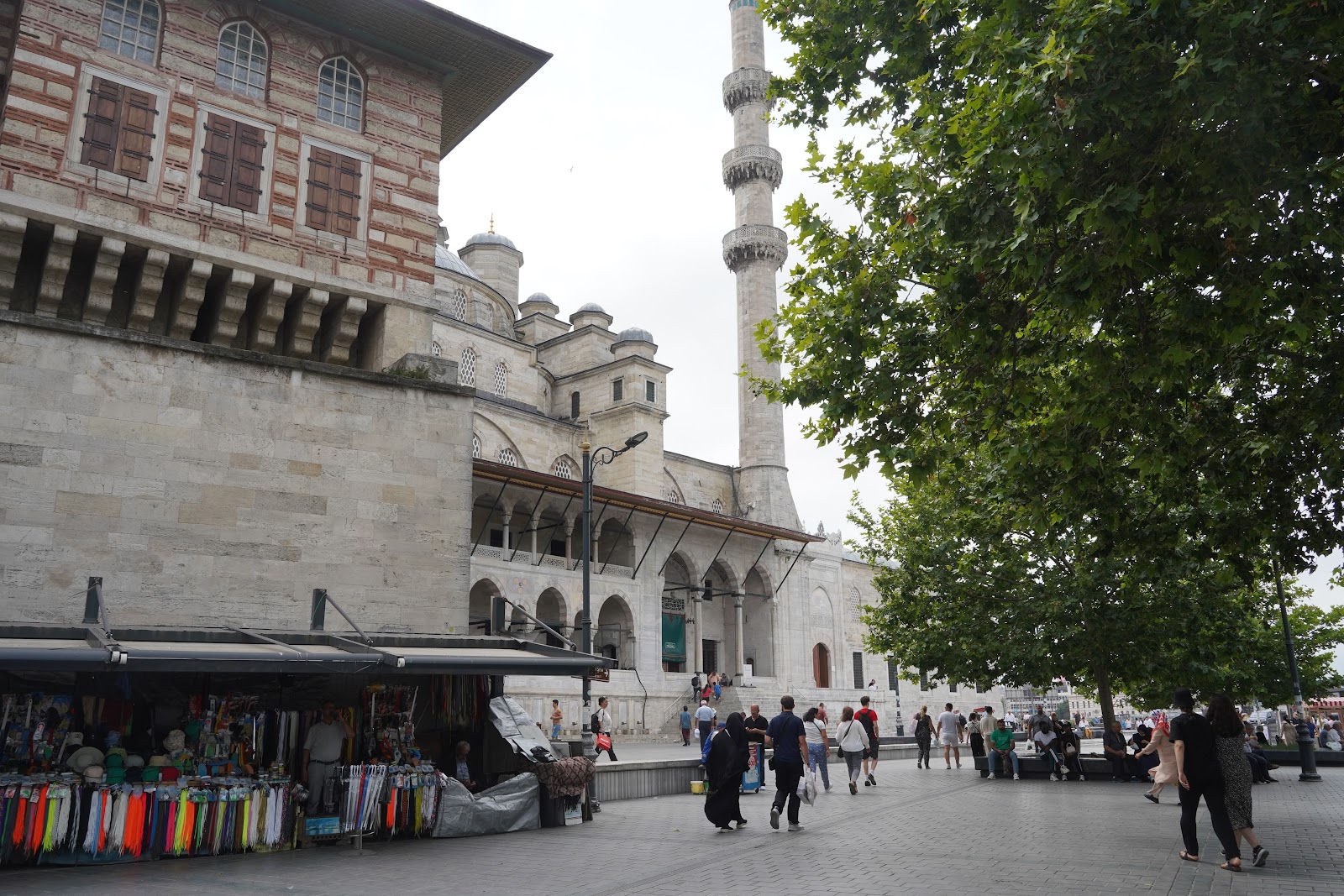
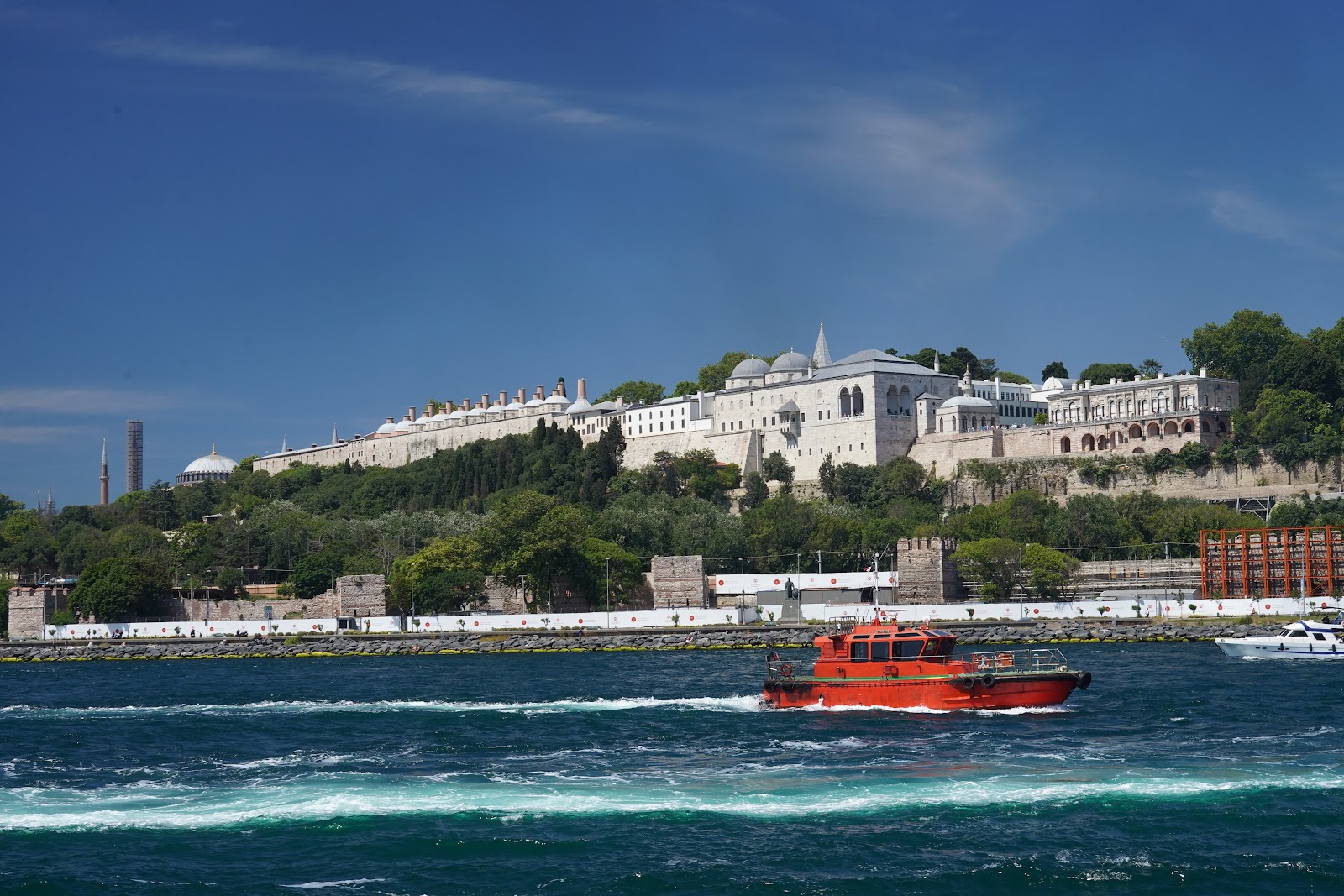


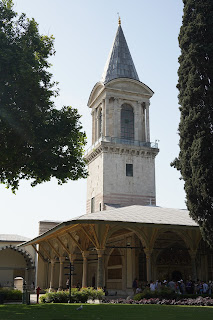



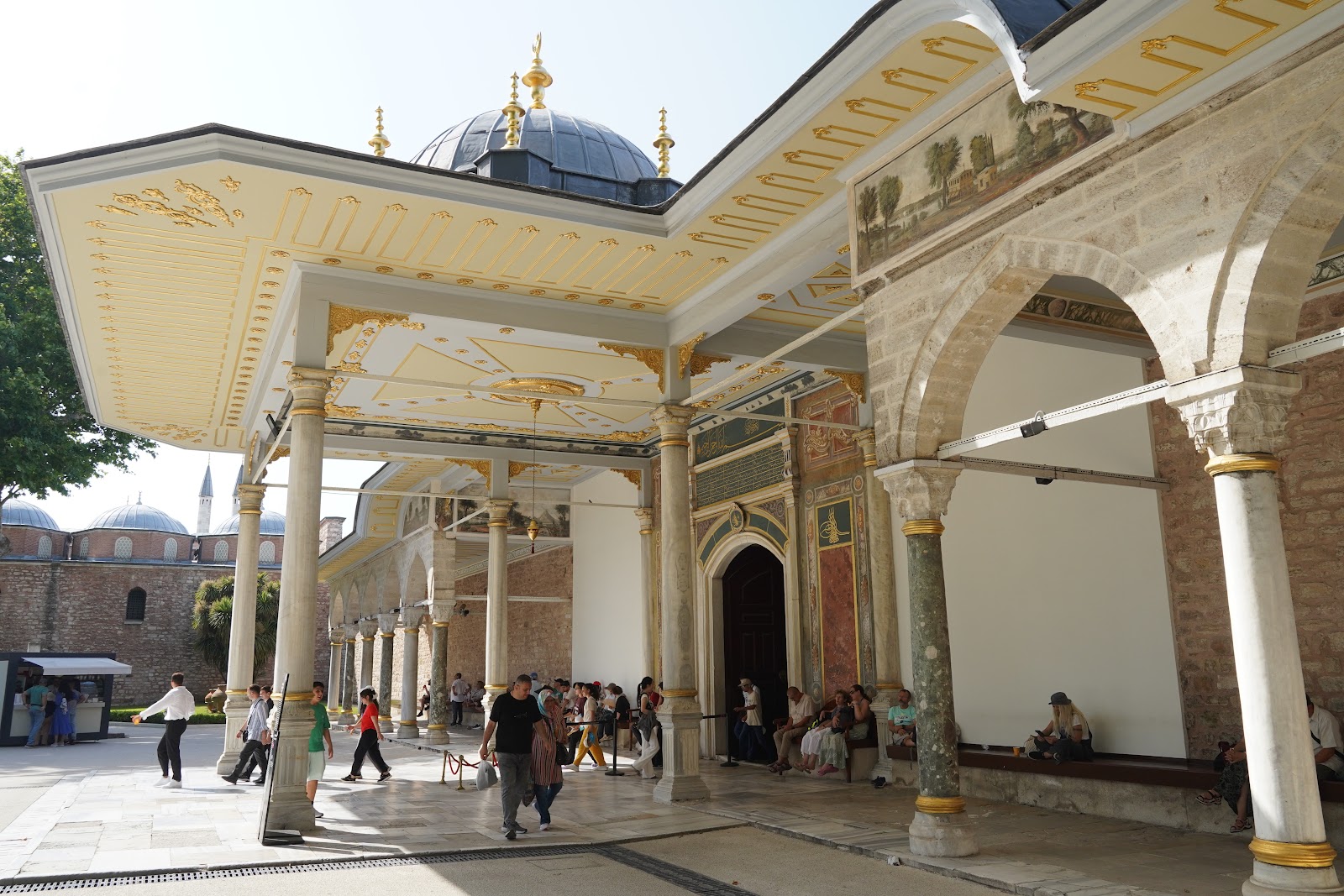







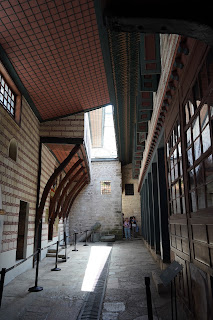







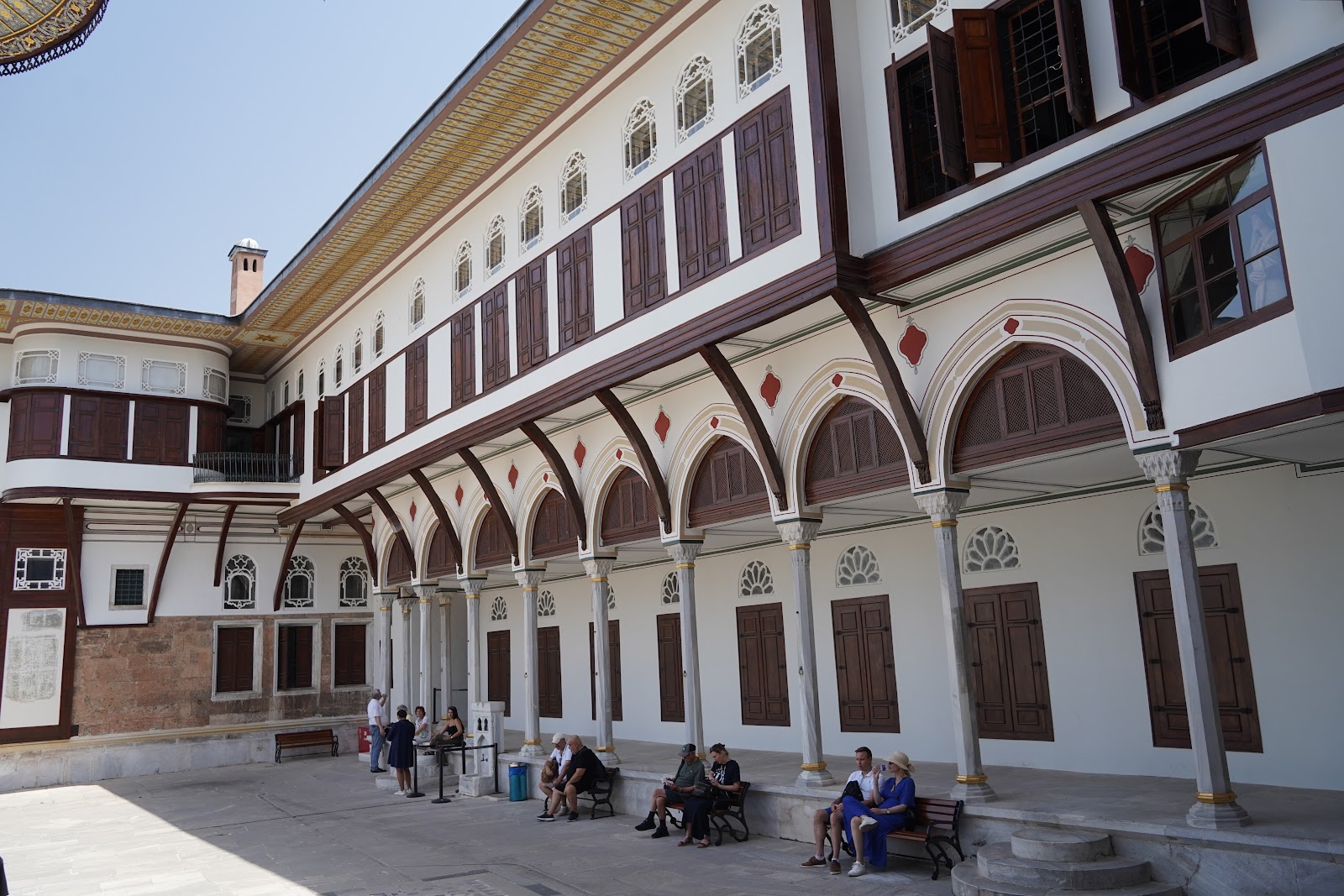










No comments:
Post a Comment